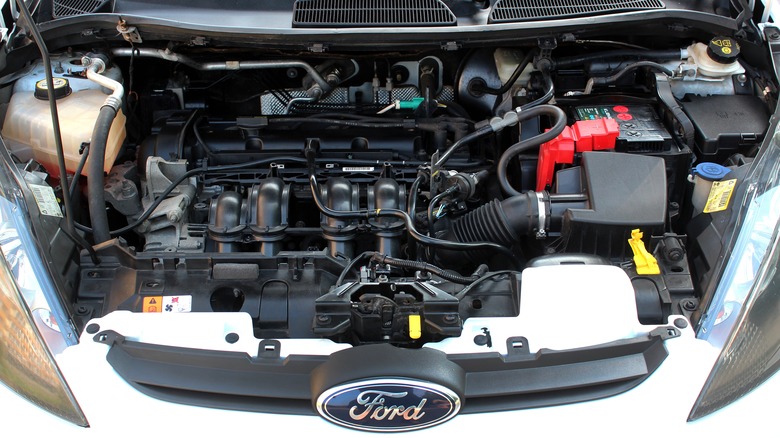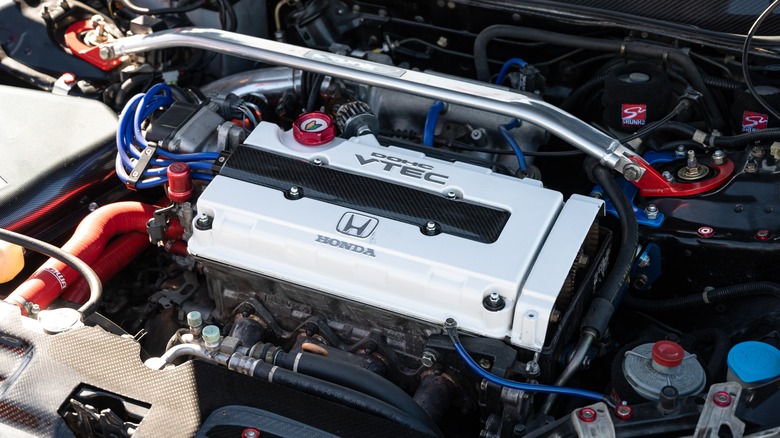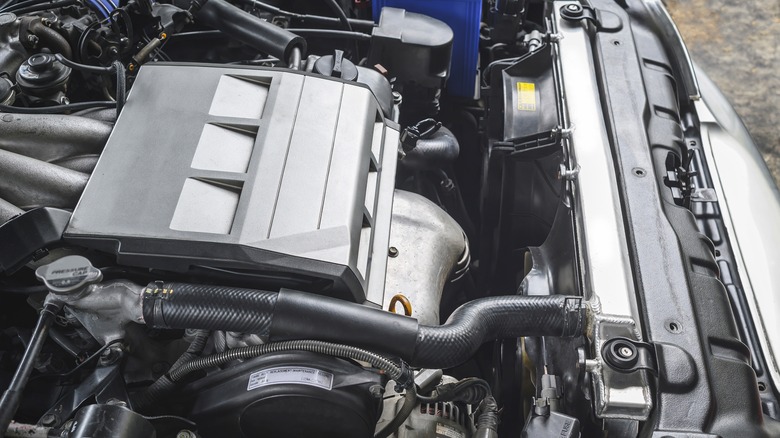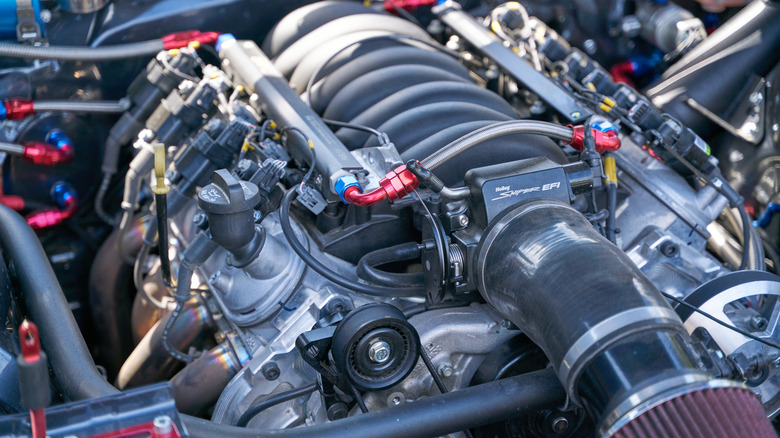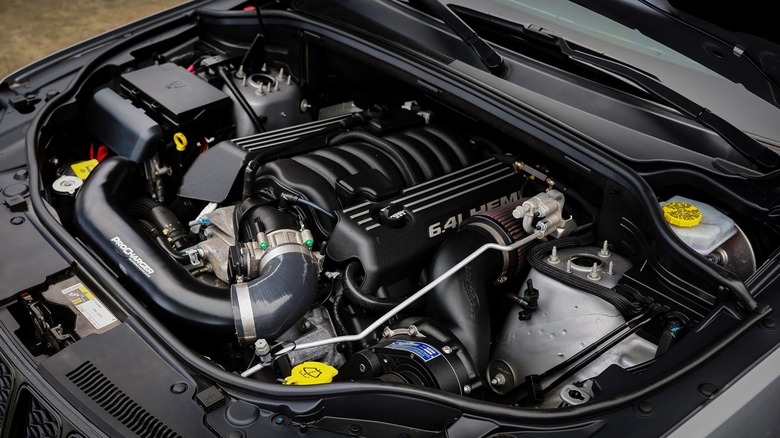Transverse Vs Longitudinal Engines: What's The Difference, And Which Is Better?
There are so many different engine types in the marketplace. You have your V6s, V8s, flat engines, inline engines, and more. However, before you get down to the specifics of what kind of engine you are going to put underneath the hood of your car, there is one decision that must be made that you may not even realize is being made when selecting an engine. With all the various types out there, your engine will either be a transverse or longitudinal one.
For many vehicles, the decision as to which of these two engine types your vehicle will have is predetermined. This could be because of where your engine is placed in your vehicle or which wheels the engine is meant to power. Transverse and longitudinal engines each have their place, and each has its fans. To say one is better than the other is a bit of a fallacy, as their applications are quite different. Here, we will be breaking down the differences between these two engine types, helping you decide what to look for when buying a new car or wanting to put a new engine into the one you already have.
What is a transverse engine?
Transverse engines are most likely the engines you have the most experience with, as they tend to show in vehicles more often than longitudinal ones. What makes an engine a transverse engine is how its crankshaft is mounted in comparison to the driveshaft of the vehicle. In the case of transverse engines, they are mounted perpendicularly. The engine is then able to connect to the axle, differential, and transmission, all at the front of the car.
Because of this connectivity, transverse engines tend to be the go-to for cars with front-wheel drive or even all-wheel drive. There has been a significant rise in front-wheel drive vehicles in recent history, with compact and economy cars gaining steam, so it only makes sense that there has been a simultaneous rise in transverse engines as well. Transverse engines tend to stay relatively moderate in size. Rarely will you ever see a transverse engine larger than a V6.
There are rear-wheel drive vehicles that use transverse engines, but these tend to be cars where the engines are rear-mounted rather than the typical method of being under the front hood. The important thing about transverse engines, though, is how they are mounted.
What is a longitudinal engine?
If a transverse engine is mounted so that its crankshaft is perpendicular to the driveshaft, then a longitudinal engine is the opposite. For these engines, they are mounted parallel to the driveshaft, and for them to operate, they must be connected to the drivetrain. Because of this way of mounting, longitudinal engines are mainly used for one of two purposes. First, they tend to be used on rear-wheel drive vehicles, which again puts them in direct opposition to transverse engines. Having the engine's crankshaft in a direct line with the rear differential makes it a far more sensible option for these kinds of vehicles.
The other reason someone would want a longitudinal engine is for pure power. Transverse engines tend to stop at V6s, so if you're looking for a hulking V8 engine, chances are you will be getting a longitudinal engine. Being able to better allocate that power across the entire vehicle — rather than just the front of the car — makes this engine better equipped to handle that extra oomph.
Efficiency
While power is certainly an important factor in which engine you want under the hood, how efficiently it can use its power is as important a factor, if not more so. Minimizing the wear and tear on your engine is key to making your vehicle last as long as you hoped it would when you bought it. Transverse and longitudinal engines are not equivalent in their efficiency, and in fact, one has a clear edge over the other.
Transverse engines tend to be the more efficient engines of the two. The crankshaft being perpendicular to the driveshaft means that it is parallel to the front axle, and since most vehicles with transverse engines utilize front-wheel drive, there is no degree of shifting necessary to power the axle. Plus, everything being packed at the front of the vehicle means there's very little distance that power needs to travel.
Longitudinal engines, on the other hand, not only need to reach power to the rear axle, but they also need to shift that power a full 90 degrees to work that axle. That is not to say that a longitudinal engine is inefficient, but on the whole, it's much more common to have a transverse one satisfy that need.
Cost
The manufacturing of an engine can be an incredibly costly process for an automaker, which is why they have spent decades experimenting with different materials, styles, and sizes to keep costs lower. So, automakers should be happy that transverse engines have become the more widely used engines in vehicles because they are also the less expensive units to produce.
Much like with the engine's efficiency, being able to house all of the driving components at the front of the vehicle means there is less involved in having it communicate with the front axle. Fewer parts mean less to manufacture, and it means the car will also weigh less.
Meanwhile, longitudinal engines require more mechanical components to connect to the drivetrain to operate a rear-wheel drive vehicle, as parts have to be woven throughout the vehicle to reach the rear differential. Longitudinal engines make it more difficult for automakers to save money on parts simply because they require more than a transverse engine. These engines also just generally tend to be bigger, and that will also drive up the price of a longitudinal engine. Once again, the transverse engine wind up ahead.
Power
Now, it is time for the longitudinal engines to shine. As mentioned previously, transverse engines tend to be smaller machines. You will not commonly find them in sizes larger than a V6. While that kind of engine — especially with its lighter weight in a transverse mounting — will be enough for most people, some out there just need more power for their vehicles. Sometimes, it is because they have a larger car or truck that requires it, or they just want the most power they can possibly have.
Longitudinal engines can be a lot larger and deliver more power to your vehicle because their power does not need to be confined just to the front of the vehicle. Rear-wheel drive vehicles tend to be favored amongst vehicles designed for high-performance or racing, so that means you are probably going to put a longitudinal engine underneath the hood.
As with anything, transverse and longitudinal engines both have their advantages and disadvantages. If you want an efficient compact car, then a transverse engine will be perfect for you. If you want something to deliver a ton of force, get yourself a longitudinal one. It's not a matter of which is better than the other, just which is right for you.
